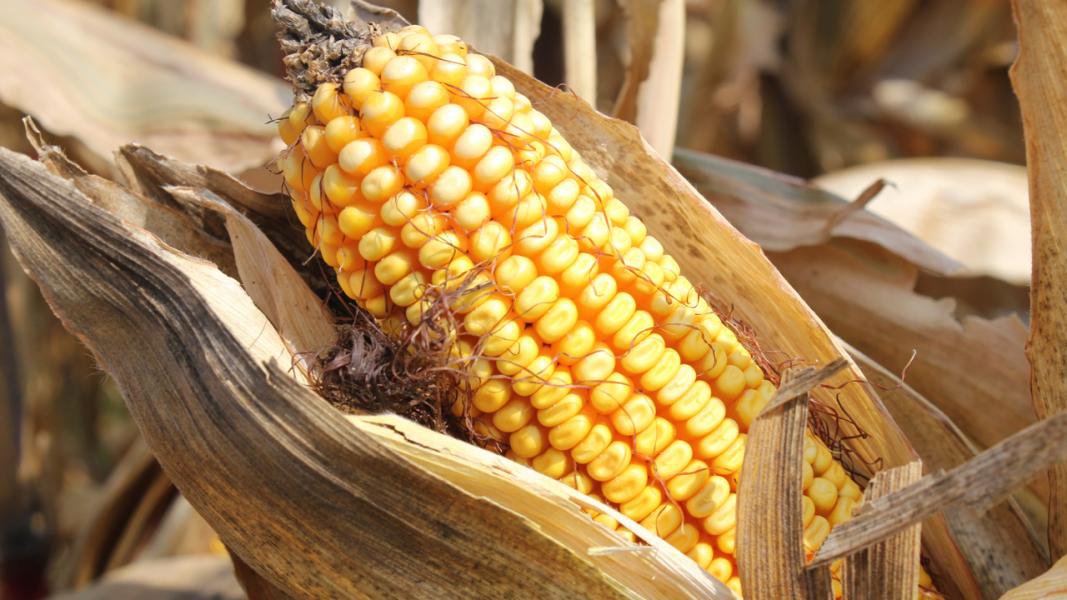Eager eyes on drought-resistant corn
By Amy Mayer, Harvest Public Media
Oct. 8, 2012, 6:30 a.m. ·

Listen To This Story
Gary Plunkett was giddy with anticipation.
The farmer and seed dealer was harvesting corn near Maxwell, Iowa, and he was about to bring in his first-ever sample of a so-called drought-resistant corn, a Syngenta product called Artesian.
“I’m real anxious to get in the combine and see what it does, because right or wrong Mother Nature gave us the perfect year to test out this Artesian corn,” Plunkett said.
With the corn harvest well under way across the Midwest, seed companies may be just as anxious. The dry summer offered ideal testing conditions for new drought-resistant corn varieties like the Syngenta corn Plunkett planted.

Photo by Amy Mayer, Harvest Public Media
Farmer Gary Plunkett watches the yield numbers as he harvests a field of Syngenta's drought-resistant corn.

Photo by Amy Mayer, Harvest Public Media
Mitch Lobeck, a Syngenta sales rep, looks over the data on farmer Gary Plunkett’s drought-resistant corn. The verdict? 188 bushels per acre.

Photo by Amy Mayer, Harvest Public Media
A test field of Syngenta's Artesian drought-resistant corn near Maxwell, Iowa, is ready for harvest.
Before getting to this test plot, Plunkett’s corn harvest numbers had ranged from disappointing to thrilling. That’s been true across Iowa, where yields have averaged about 140 bushels per acre vs. 172 last year. Of course, some farmers lost everything to drought or severe winds, so their zeros really bring down that average.
Once in the cab of the combine, Plunkett watched as his computer calculated on-the-fly yield — how much grain per acre was going into the tank. He liked what he saw.
“Looks like the yield is going to be up there very well, the stalk quality looks great, it’s standing very well,” he said.
A Syngenta sales rep weighed the corn and calculated the plot’s yield at 188 bushels per acre.
“I think it’s very successful,” Plunkett said, adding he will plant some Artesian again next year, and recommend it to his seed customers.
Other farmers are also intrigued by the early returns.
Brad Moeckly, who farms near Boone, Iowa, said he’s been been following Monsanto’s drought-resistant product. It wasn’t available for planting in Iowa this year, but he’s heard farmers farther west — where it’s even drier — got six more bushels per acre with it.
Moeckly said he’ll consider the product — but probably not for next year.
“I’d like to get another year under our belt and kind of see so we can get more consistency,” he said. "It’s got to be economically viable.”
That’s why these harvest results are so important. DuPont Pioneer recently announced its drought-resistant AQUAmax showed about an 8 percent increase over other hybrids. Monsanto and Syngenta haven’t released their numbers yet.
But many farmers, like Moeckly, say they base their seed choices on years of data — not one season’s weather.
“It’s a very tough year to draw any good conclusions from yield data, I think, because the weather’s been so variable and so unusual,” said Kevin Larson, who farms in Story City, Iowa.
He looks at what’s done best over time on his different fields when he decides what to plant. So does Bill Couser, in nearby Nevada, Iowa, who noted many modern hybrids already do well in low-rain years.
“I know when I had my first drought in 1977 that we actually had 3 bushels to the acre. If I would have had the hybrids today back then, we would have never had that kind of a drought because with the hybrids today, it’s just amazing what they’re pulling through,” Couser said.
Final numbers for this year’s harvest are still a few weeks out. It may take years before seed sales reveal what farmers really think of drought-resistant corn.
But even though the big seed companies, including Monsanto and DuPont, may soon be touting their results, farmers may not rush to plant the hybrids next year.